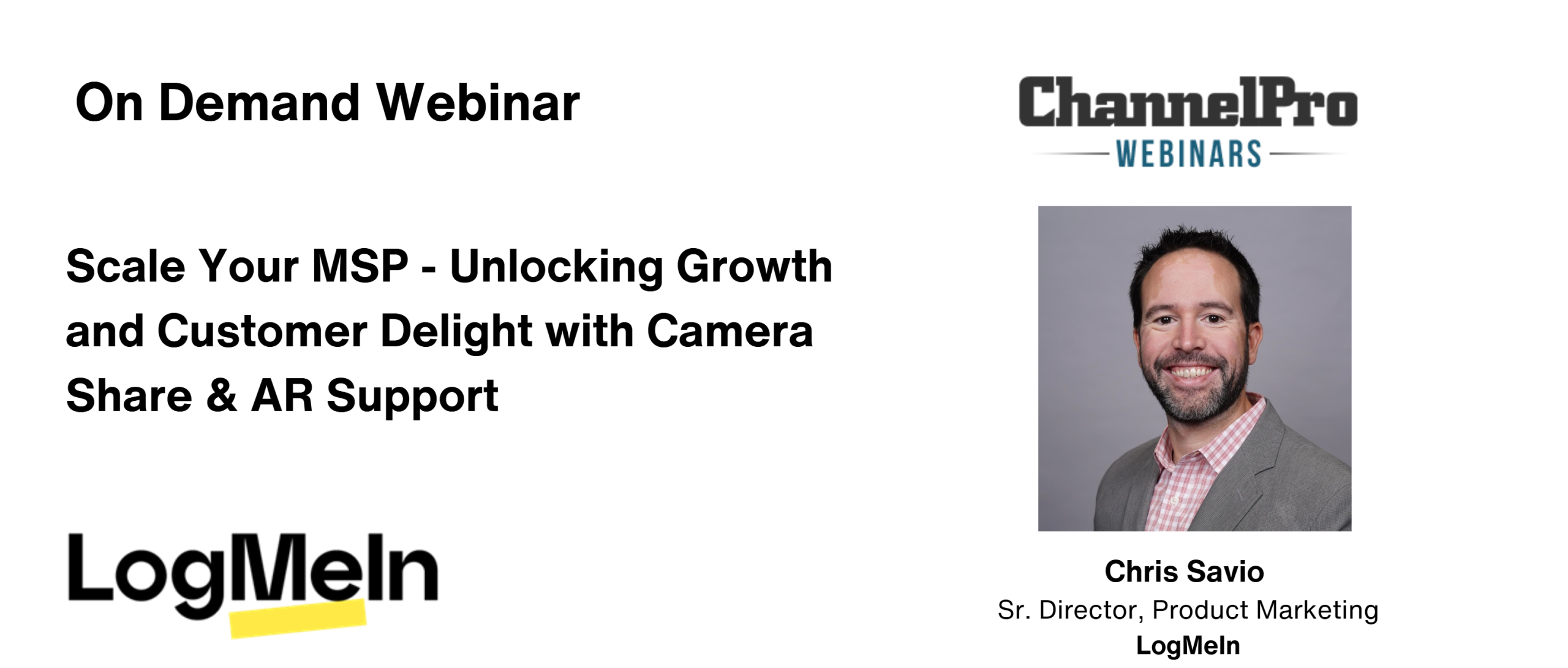PATRICK WILEY has experienced a variety of reactions when introducing himself to employees who’ve just learned that their company has been bought. “”We had one guy stand up in a meeting and [tell the owner], ‘I can’t believe that you’ve done that to me.’ He walked out and never came back,”” recalls the CEO of Aldridge, an IT solutions provider that has acquired 13 small MSP businesses over the past 15 years. Conversely, the Houston-based company has retained employees from some of its first acquisitions who are thriving.
Obviously, buyers hope for the latter rather than the former. To ensure the onboarding process goes as smoothly as possible and results in an acquisition that provides maximum ROI, Wiley says, it’s important to remember the acquired company’s employees and customers did not choose you, and so the change can be a shock.
Buyers therefore need to develop a project plan that addresses how personnel, tools, and customers will be organized; assign a team to oversee it; and develop a cadence of communication to employees and customers that is well timed and well thought out.
That’s according to Michael France, managing partner and COO of coaching firm the Taylor Business Group, who adds that the plan should build on a collaborative effort that starts between the buyer’s and seller’s teams along with legal and accounting prior to the close. “”It’s not developed in a vacuum … because everyone’s unique in what the underlying challenges are in either side of the business.””
Key Challenges
Even with a plan, onboarding is a huge project with lots of hurdles, acknowledges Mike Fowler, CEO of Dallas-based Iconic IT, which formed with the merger of four MSP firms in 2019 and has since made other acquisitions. “”First and foremost, it’s putting more work on people who are already overloaded and working hard,”” he says. “”Make sure you’ve got the staff to handle the challenge.””
Another challenge, Fowler says, is taking your high-level plan for the acquisition and following it up with a more granular one. For instance, he explains, “”There are hundreds and hundreds of things to do to integrate someone into ConnectWise. And if your plan says, ‘integrate into ConnectWise,’ you have essentially failed to plan and it won’t work.””
Fowler’s onboarding project plan template has more than 3,000 steps. “”Not all of them are hard, but you can’t skip anything.””
A third hurdle is the fact that every MSP has their own processes and clients are used to doing things a certain way, “”even if it’s not the best way,”” Wiley says. “”As humans, we hate to change. And so just even the slightest change in process … really puts a strain on the relationship of a client.””
Creating the Project Plan
Karl Bickmore, CEO of Cumming, Ga.-based Snap Tech IT, tracks and manages an onboarding project in his PSA system. The project is broken into three major categories—operations/service delivery, sales and marketing, and administration/back office—with a team leader responsible for developing a timeline for each category with detailed steps and executables.
“”You’ve got to remember to have the right scope,”” Bickmore says. “”It’s not just getting those employees onboard or getting them into your tools or moving their computers. It’s also things like insurance [and] legal representation. How will the marketing change? Do you have access to the domain name? Do you have the social media accounts? If you don’t spend a lot of time thinking about it, you’ll miss pretty big things.””
While there is no uniform timeline for onboarding success, Bickmore and others offer some general guidelines:
The first 30 days
The No. 1 consideration is getting employees paid, says Fowler. “”When you’re purchasing a company’s assets, you’re rehiring the employees, so your HR team needs to be ready.””
France notes that if the deal is an asset purchase transaction, which many are, the buyer acquires the seller’s checking account and can continue to run payroll from that. “”There’s no immediate pressure to switch to a different payroll system on day one,”” he says.
Other HR considerations include medical and retirement plans, noncompete contracts, and miscellaneous paperwork typically required for a new hire.
France says this period is also focused on communicating internally about who’s staying, who’s going, and who’s moving to a different position, as well as deciding how to handle external communication. “”If you’re not changing the help desk, maybe you don’t need to tell the customers just yet.””
Informing employees should happen early, says Bickmore, who does a company-wide notification in the first day or two, holding a town hall and meeting collectively with the entire team to share the transition plan and answer questions. “”We take their input, and look for opportunities to improve.””
If a seller wants to tell employees ahead of the completed acquisition, Wiley wants to be there for the conversation. More preferable, he says, is breaking the news after the deal has closed, when “”the seller meets with the company by himself for a short period of time then brings us in.”” In the pre-COVID-19 world, he adds, his team would take new employees out to dinner or cocktails “”just to get to know each other and try to bring that uncertainty down. That’s really yielded the best results for us.””
In terms of systems integration, Aldridge transitions the financial systems within the first 30 days. “”Generally that’s a hard cut,”” Wiley says.
30 – 90 days
Technology platforms are typically tackled next. “”We’re not going to necessarily onboard customers immediately, unless there’s a compelling reason to,”” Bickmore says. Instead, he’s focused on mapping out how email, ticketing, RMM tools, and documentation will be integrated.
Wiley says that even if the acquired company is using the same PSA they will migrate them onto Aldridge’s instance and run parallel systems for a short period. Aldridge follows that with the RMM migration, and then anti-virus and endpoint protection tools.
Fowler adds that it’s important during this period to work out how the two companies will communicate and share data “”so we know what could get broken in the process and what gaps we might have.””
If you’re changing processes be sure to provide training too, Fowler stresses. “”There’s two things we’re trying to avoid. We don’t want to cause emotional stress to employees who have been doing things for a long time the same way. We don’t want to do that to customers either.””
Other tasks include consolidating websites and making decisions about what the services portfolio will look like going forward.
France recommends that the buyer starts communicating with clients within the 60-day period. Actually consolidating customer-facing resources may not happen until 90 days, he adds, but you should be talking to clients and reassuring them that “”we merged to deliver a better service to you. And that’s a face to face, not an email.””
90 days – 12 months
Aldridge starts onboarding clients around the six-month mark, but Wiley notes the process can take anywhere from three to nine months. That includes a pause to evaluate customer satisfaction and integration issues, and make any necessary course corrections.
Snap Tech IT’s priority during customer onboarding is not making waves. “”Sometimes it’s not the biggest, most complicated [clients] we go to first. We will take care of the easy ones first, see how it goes, and then learn and go to the next. Or sometimes the most critical customer is prioritized. That’s a contextual decision.””
France says the buyer should also be identifying the top-tier A and B clients, and then raises prices on the C clients or helps them find another provider. “”Obviously you want to invest more into your B and A clients.””
Documentation is usually done later, Bickmore says. “”We’ll find ourselves doing several cleanup projects for many quarters after the merge.””
Expect the whole process to take 12 months, concludes Fowler. “”You want to condense it as much as you can, but generally, to get them selling the same thing you’re selling and doing things the way you do them, that process takes a year.””
Onboarding Mistakes to Avoid
There’s no one playbook for onboarding an acquired company, but those who have done it point out some mistakes to avoid:
- Don’t tell people things won’t change, because they will. “”Even what we think is insignificant are big changes to the company that’s being acquired, to their employees and to the customers,”” says Iconic IT’s Mike Fowler. For instance, adjusting payment terms is a “”huge change”” for a customer.
- Make sure the seller understands tax and legal ramifications. “”Most IT business owners in my experience do not fully understand how an accounting true-up works in an acquisition,”” Snap Tech IT’s Karl Bickmore says. “”Because of that, we’ve had some significant issues with … people having surprise tax bills that we tried to point out to them during the negotiation process.””
- Don’t rush consolidations and migrations. “”When I first started doing this, we budgeted some really tight timelines in terms of staff reduction, or changes or [finding] synergies,”” says Aldridge’s Patrick Wiley. “”Our newest models really stretch that out.”” Instead of a three-year ROI, Aldridge now expects a five-year one, and while he acknowledges that is more costly, it helps with customer retention. Ditto for customer migration, he says.
- Plan to lose 10% to 15% of your acquired customers. Despite your best efforts, some customers won’t like the change, so make sure your financial and planning models take that into account, Fowler advises.
Should They Stay or Should They Go?
Retaining employees—the ones you want, at least—is a key part of the onboarding process.
Taylor Business Group’s Michael France recommends having the seller identify the “”star players”” prior to closing and nailing down employment contracts with them ahead of time.
For Iconic IT, which is focused on growth, “”we need every person we can find,”” the firm’s Mike Fowler says. “”We’ve gone into every acquisition with the expectation that we’re keeping people and that there’s productive roles for everyone.””
Snap Tech’s Karl Bickmore says his firm spends a lot of due diligence focusing on cultural fit, so his intention is to keep every employee as well. “”We may redirect some or change the responsibilities … but in the grand scheme of things, we want to keep employees.”” He makes an effort to spend time with the acquired employees to build trust. Often, he says, they’re excited about working for a bigger company with more opportunity.
Sometimes there’s not a role for everyone, Aldridge’s Patrick Wiley acknowledges. “”We’ve bought a couple of companies that had nearly double the amount of staff the numbers say they should have. Those are trickier situations.”” Wiley says Aldridge tries to address downsizing quickly, “”provided that we’re not impacting client relationships.””
Finally, there are situations when an employee you initially want to retain doesn’t work out, Bickmore says, and that needs to be addressed promptly but respectfully. “”You’re working with someone’s livelihood. We’ve offered to give them letters of recommendation or refer them to other IT providers.””
Employee issues are sensitive, but it’s important to get the team right, France says, to fully benefit from “how great the combination” of these companies can be.
Image: iStock


















